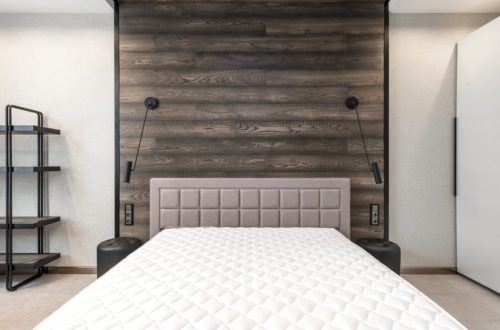What You Need to Know About Swedish and Deep Tissue Massage

The Swedish massage shares many similarities with a deep tissue massage, often making it challenging to differentiate between the two. They vary in techniques used, pressure applied, intended purposes, and target areas. While both aim to reduce muscle tension, it’s crucial to distinguish between them to receive the massage that best suits your individual needs. If you’re still unsure whether these two massages are identical, read on to learn about the key distinctions between these styles.
Swedish Massage
Swedish massages are among the more common styles offered in most massage parlors. Also referred to as a classic massage, this technique focuses on reducing stress levels and inducing relaxation by easing tension in the muscles. It’s typically favored by individuals who prefer gentler strokes over the deep and forceful ones associated with deep tissue massage. The Swedish massage effectively addresses tight muscles in the lower back, shoulders, or neck, often caused by prolonged sitting or poor sleeping posture.
Techniques
Practitioners of Swedish massage typically employ methods like kneading, which are gentler on your muscles and joints. They incorporate long strokes, passive joint movements, and deep circular motions to promote relaxation and stimulate the nerves. This technique also aids in improving blood flow and lymph drainage.
Procedure
Traditional Swedish massages encompass your entire body. They generally commence with you lying on your stomach or back before being instructed to turn over midway through. If you have a specific area that requires extra attention due to tightness, you can inform the masseuse or therapist to allocate more time there. You can also specify the level of pressure — light, medium, or firm — to align with your preference. Before the session, the masseuse or therapist will ask you to undress and provide a cloth for draping, though you can choose to keep your underwear on if you feel more comfortable. While the cloth may be adjusted periodically, you’ll be covered for the majority of the session. Oils or lotions are often used to reduce friction on your body, and you may also be asked about your preferred aromatherapy scent.
Deep Tissue Massage
Though deep tissue and Swedish massages share many similarities, deep tissue massages primarily serve as a treatment for injured muscles rather than a relaxation technique. They’re best suited for athletes, runners prone to injuries, and individuals with sports-related injuries. Additionally, they effectively alleviate chronic pain conditions like lower back pain and fibromyalgia. Deep tissue massages target the deeper layers of tendons, muscles, and fascia, making them more effective than Swedish massages at relieving pain and easing physical discomfort.
Techniques
Deep tissue massages also utilize many of the same techniques like kneading and stroking, but they apply significantly more pressure to the body, which can often be quite intense. Because it’s focused on reaching deeper layers of the muscles, the therapist will typically work layer by layer, gradually increasing pressure on the affected area. Special techniques using fists, fingers, and elbows are also employed to effectively access and stimulate the deep tissue. With the added pressure, deep tissue massages help heal tight muscles and tissues while simultaneously promoting blood flow to the soft tissues and aiding in reducing inflammation.
Procedure
Therapists generally discuss the patient’s injuries or discomfort prior to the session and may target the entire body or just the affected area. Similarly, you’ll be asked to undress and the massage will commence on either your back or stomach. The therapist will start with a gentler massage to prepare the muscles before applying more pressure to the specific areas. Although deep tissue massages involve more discomfort and pressure, patients are encouraged to communicate their pain tolerance and preferred pressure. As some patients may find it counterproductive to apply more pain or pressure to problem areas, therapists usually check in if the pain becomes too much.
Tips for a pleasant massage experience
- Find the right massage therapist: Look for a qualified therapist trained in the specific type of massage you’re seeking. Investigate their practice and background, and ensure they hold professional certification, especially if you need assistance with injury recovery.
- Discuss your injuries: Inform the masseuse if you have any prior injuries before a Swedish massage so they can either avoid the affected area or focus on it.
- Communicate comfort levels: Let your therapist know if there are any areas you’d prefer not to be massaged. For example, many women may request to avoid specific private areas.
- Establish goals and expectations: Determine whether you’re looking to relax or address pain in a specific area, and communicate this to the therapist.
- Talk about pressure: If you have a low pain tolerance or prefer gentler massages, make it known to ensure you’re comfortable throughout the session.
- Warm-up: If the facility permits, consider using a sauna or taking a warm shower to loosen your muscles, making you more receptive to the massage.
- Stay hydrated: Drink plenty of water before your massage to ensure your body is well-hydrated.
Conclusion
Whether you’re seeking to unwind after a long workweek or addressing a recurring injury, it’s crucial to select the right massage style for your specific needs. Conduct prior research to understand the intended purpose of each style and determine if it’s suitable for you. While these sessions are typically brief, communicate with your masseuse or therapist about sensitive areas, pain tolerance, and preferred pressure to ensure you derive as much enjoyment from the experience as possible.
Would you like to receive similar articles by email?





